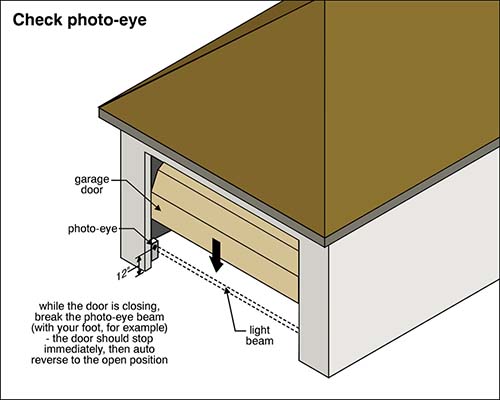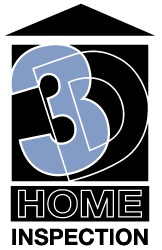In my last post about garage hazards, I wrote about many parts of a garage that can create hazards. Today I’ll focus on the hazards of the vehicle entry garage door and its automatic door operator.
The purpose of this post is to help you understand what a home inspector looks for on an installed door that can affect its function or safety. This is not intended to be a comprehensive list of all that can go wrong with a door. It also does not address how to install the vehicle door or provide safety tips for its use. You should look to a professional garage door installer and the manufacturer for that information.
Types of Doors and Door Materials
There are several styles of doors. The most common in our area are:
- Sectional roll-up panel (the most common type and the one I’ll focus on in this post)
- Tilt-up canopy
- Barn-type sliding
There are also several different kinds of materials used. The most common materials used in garage doors are:
- Metal
- Wood
- Vinyl
- Composite materials
The garage door is the largest moving mechanism in a home. It’s probably used several times daily. The door was designed to be manually lifted. If it’s working as it’s supposed to work, the door will remain open and not fall or drift down
How Home Inspectors Check Garage Doors
The first thing a home inspector should do is inspect the door itself. The components inspectors check include:
- Panels
- Reinforcing struts
- Hardware
- Springs
- Rollers and track
- Cables
If there is damage or if the inspector has safety concerns, he or she should not operate the door. A good home inspector will inform you of the problem and let you know what needs to be fixed before you use the door again.
Most garage doors have automatic garage door openers installed. Once the home inspector has inspected the door itself, it’s time to check the automatic opener. The inspector should look at the following components:
- The opener itself
- Eye sensors
- Lift arm
- Drive chain and track
- Opener control button
An improper installation of any of these can prevent the system from working properly. Again, a good inspector will detail issues in the report so you can repair them.
The Garage Door Reversing Feature
The most important safety feature is the door’s ability to reverse when it encounters an obstacle. The automatic garage door opener accomplishes this in two ways: eye sensors and automatic reverse. Home inspectors check those two features in these ways.

Eye sensors. These need to be properly located, typically no higher than 6 inches above the floor. The point of this placement is to prevent a person or pet from fitting below the beam. If something breaks the light beam when the door is traveling down, the door should reverse back up.
An inspector will make sure the photo eye sensor is working by breaking the beam while the door is closing. If the garage door opener reverse function is working right, the door will immediately change direction.

Down force retraction. Garage openers should reverse the door’s downward direction when it meets a physical obstruction. If the door’s sensitivity is not set properly, the door can hurt someone or damage property.
The home inspector will test the down force retraction by placing an object that will rest below the eye sensor beam. (If the object blocks the beam, the garage door opener won’t work.) Then, he will try closing the garage door. When the door hits the object, it should immediately reverse direction.
The manufacturer’s owner’s manual provides instructions for testing and adjusting the downforce and sensitivity setting. However, DASMA (Doors & Access Systems Manufacture Association) recommends that you hire a qualified garage door contractor to perform this test and adjustment.
In part 3 of the garage hazards series, I will review hazards related to the connection between the garage and the house. In that post, I’ll talk about steps as well as proper separation for fire and fumes.
